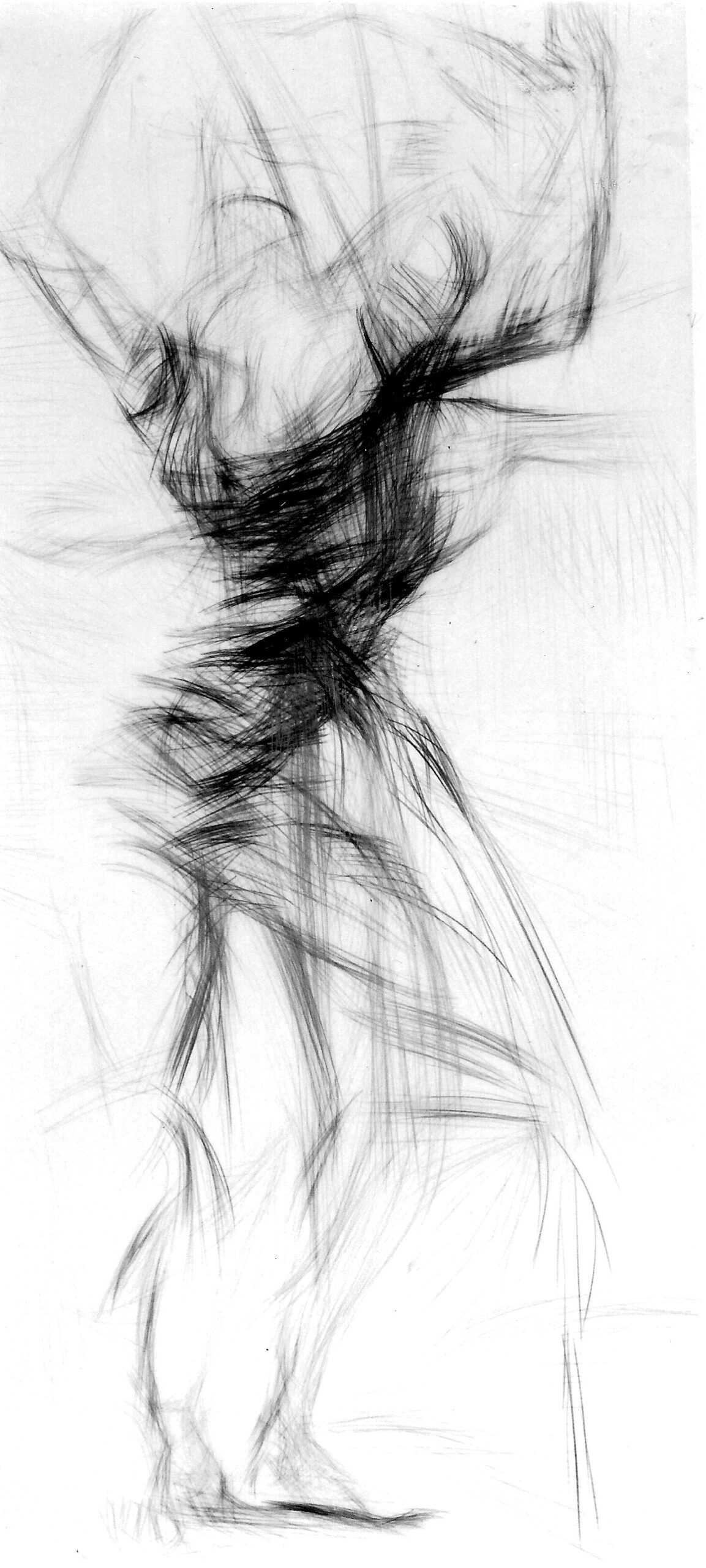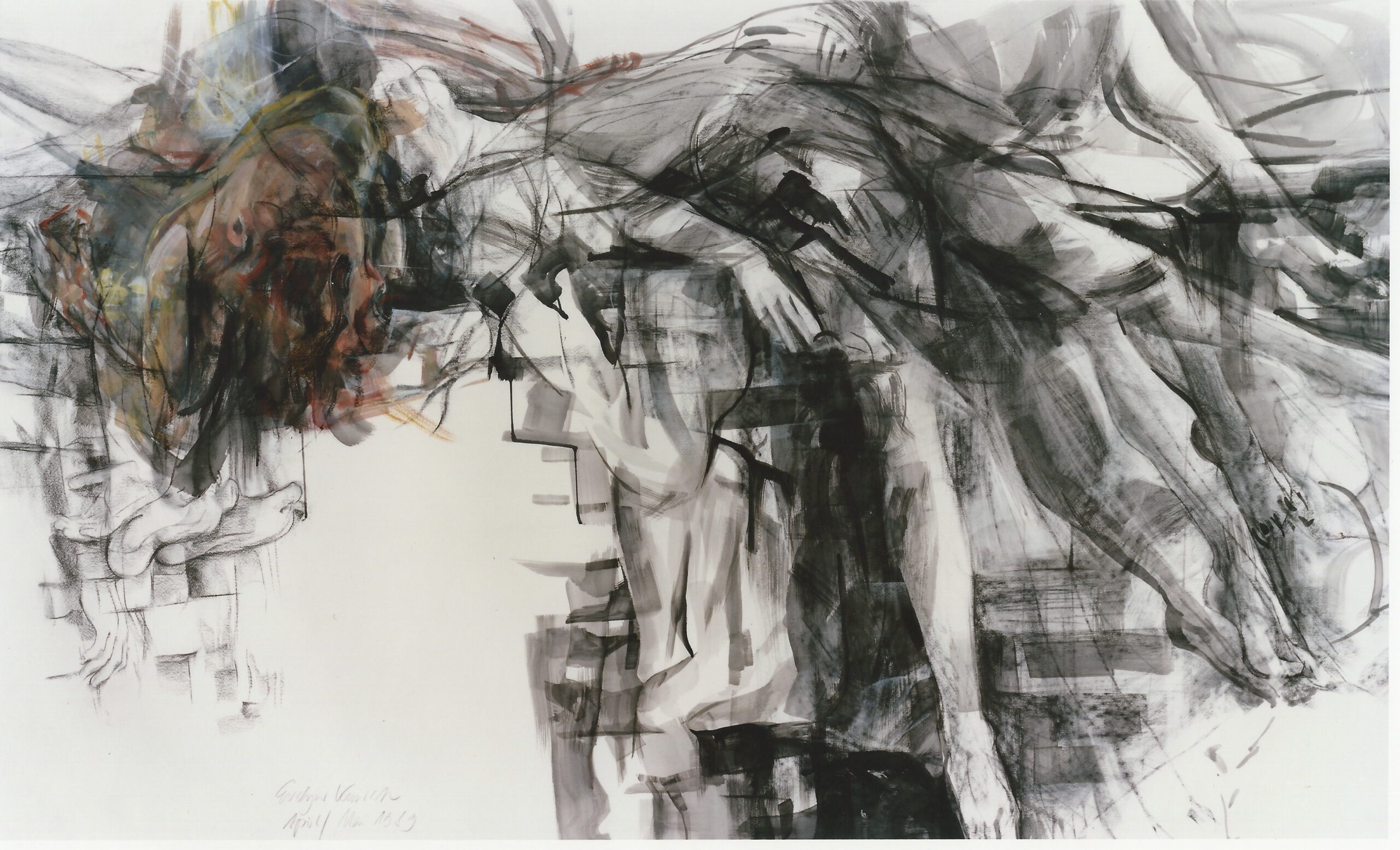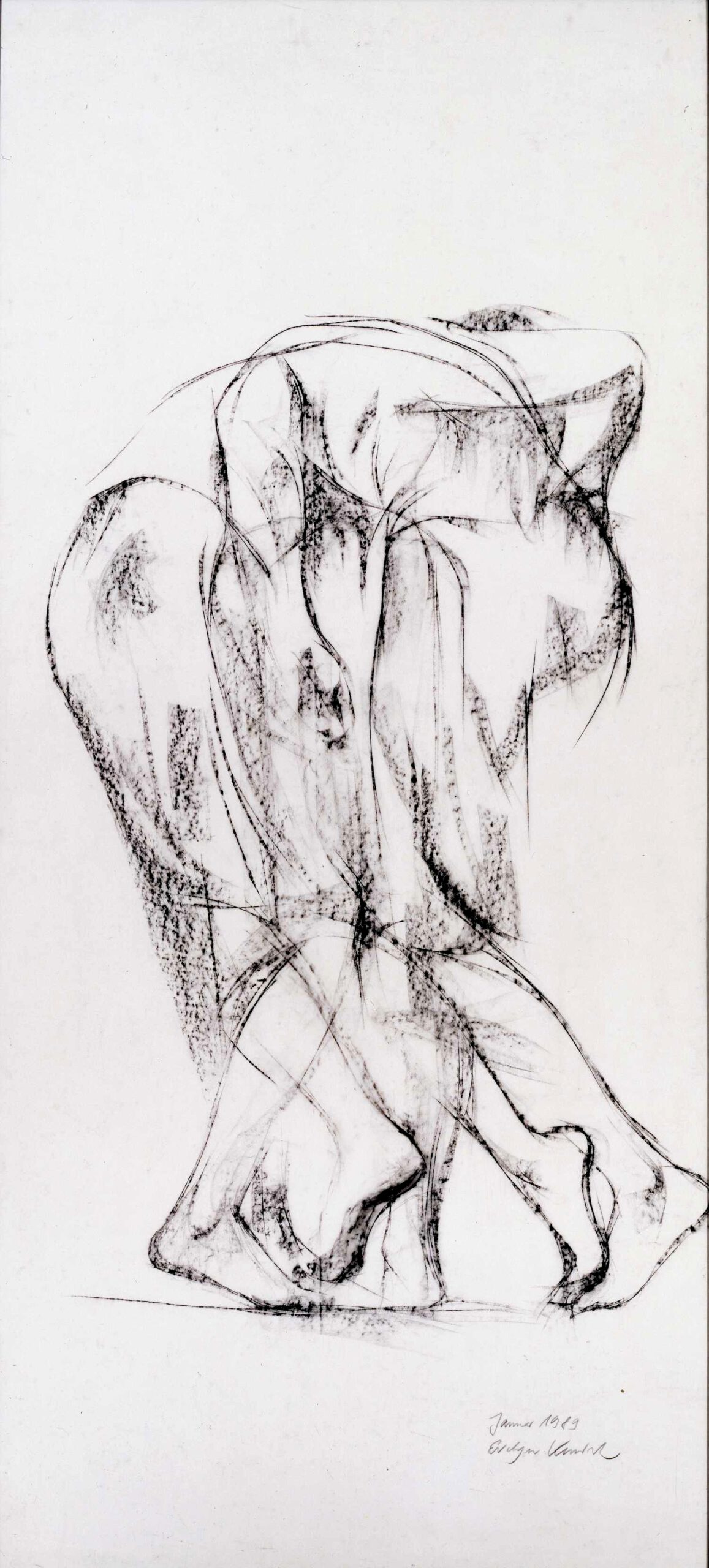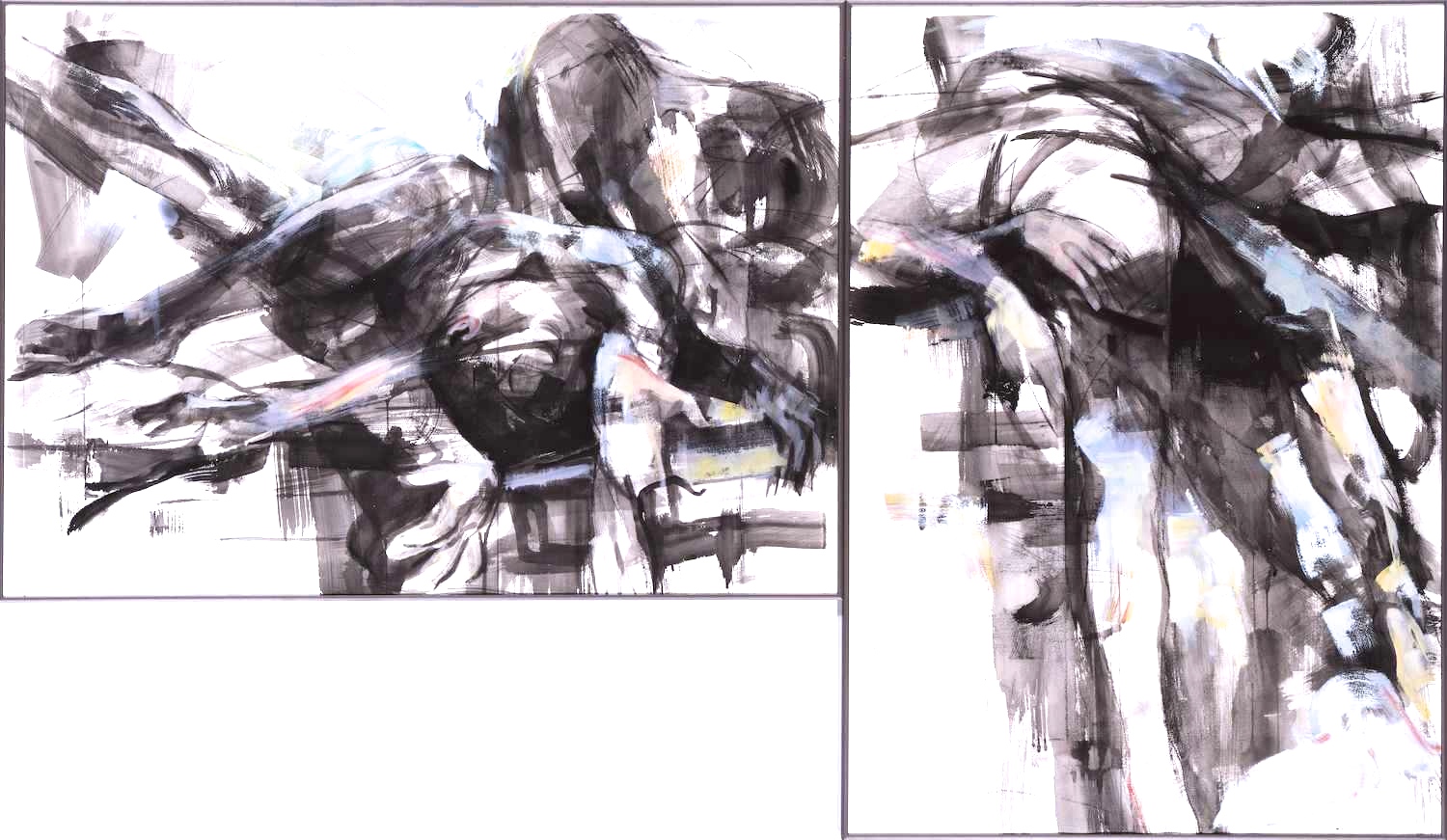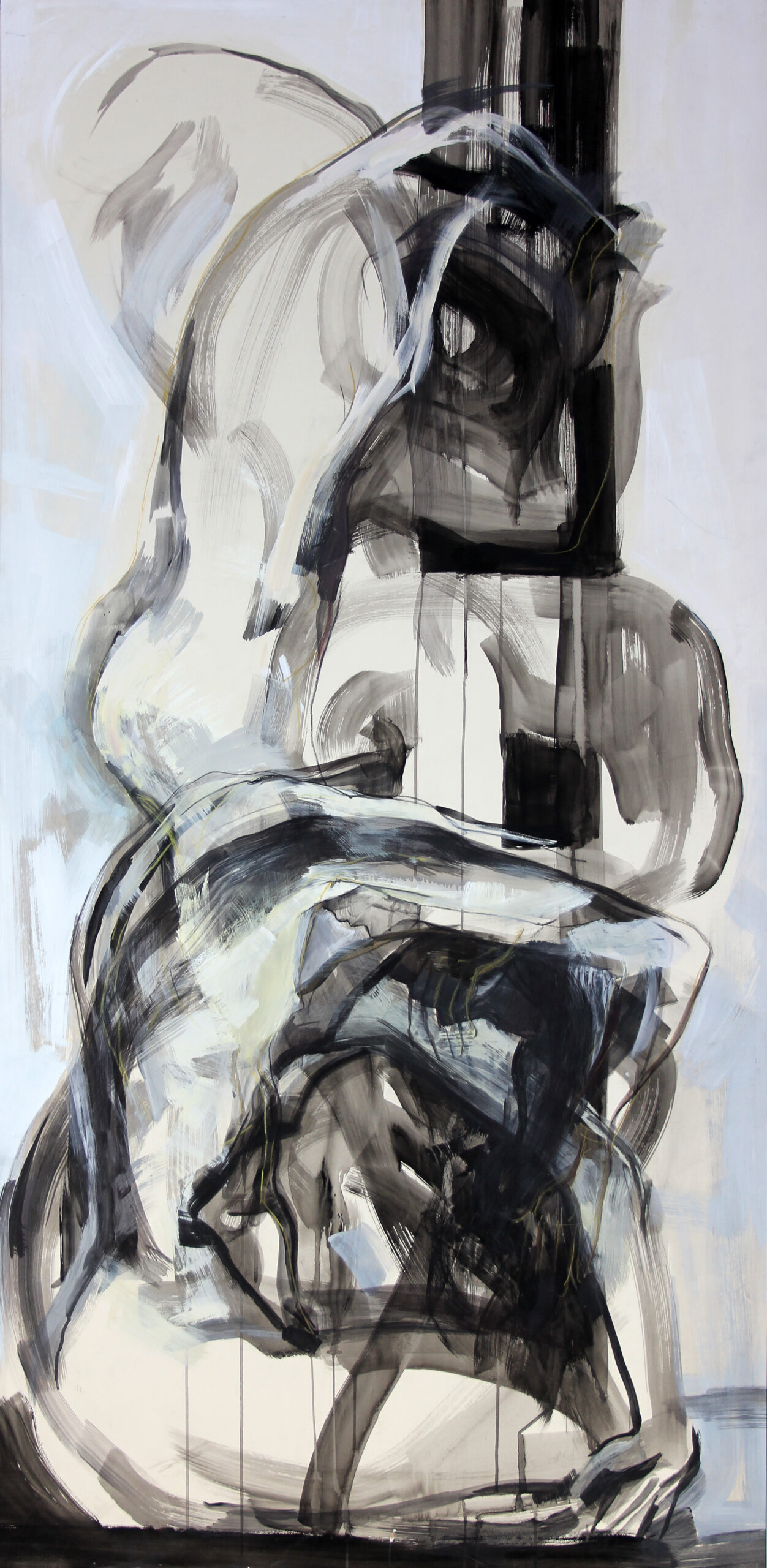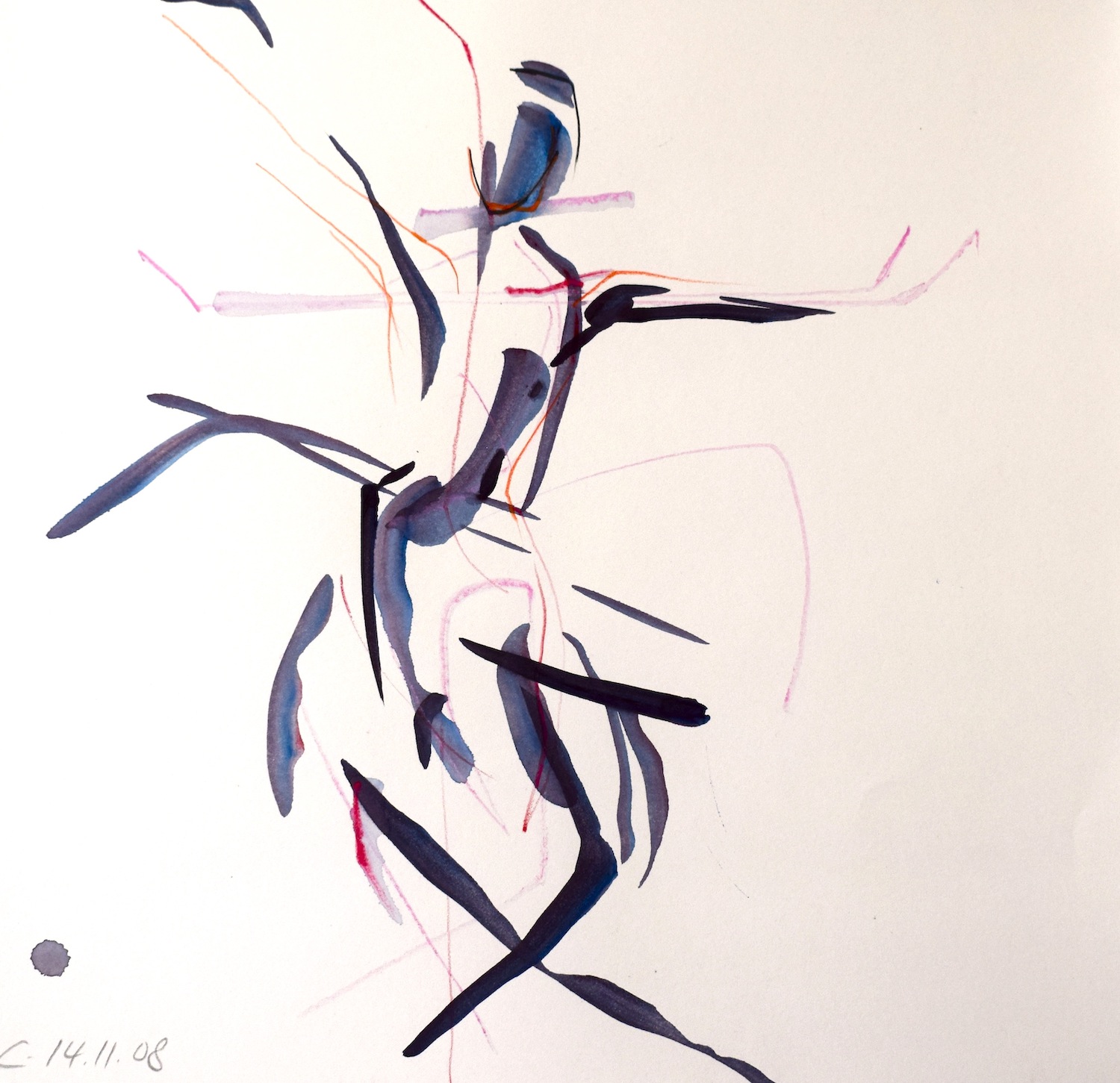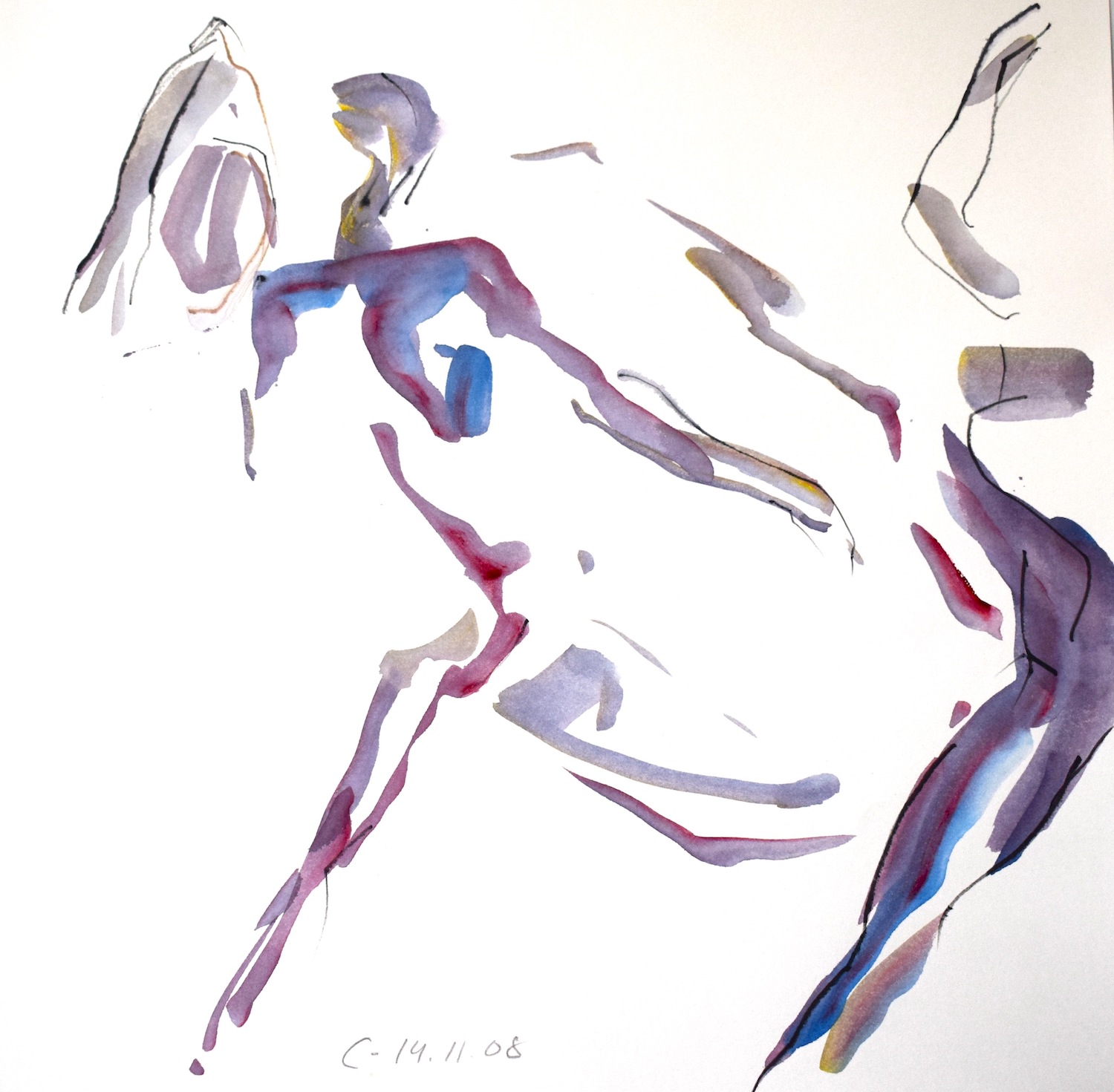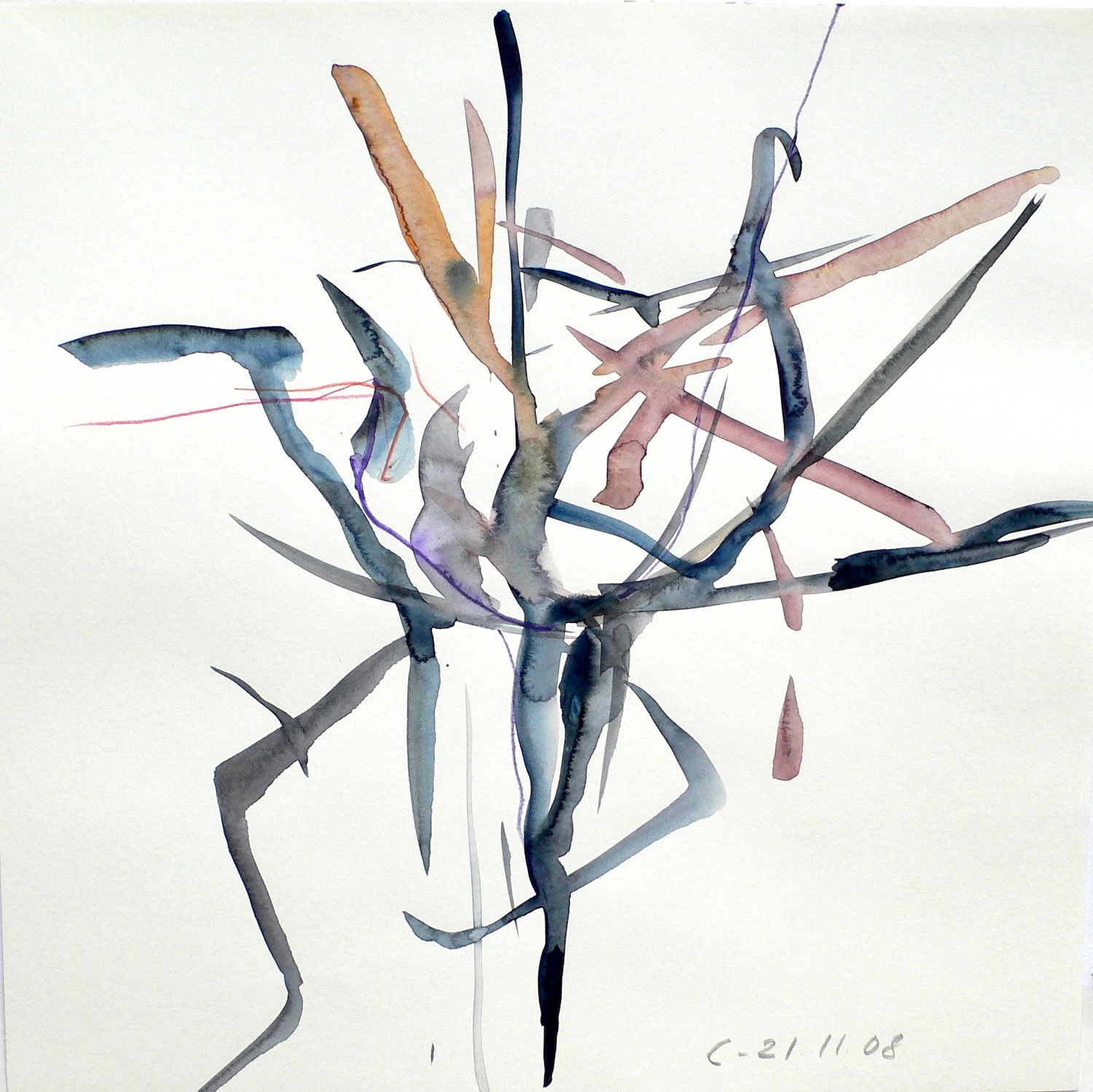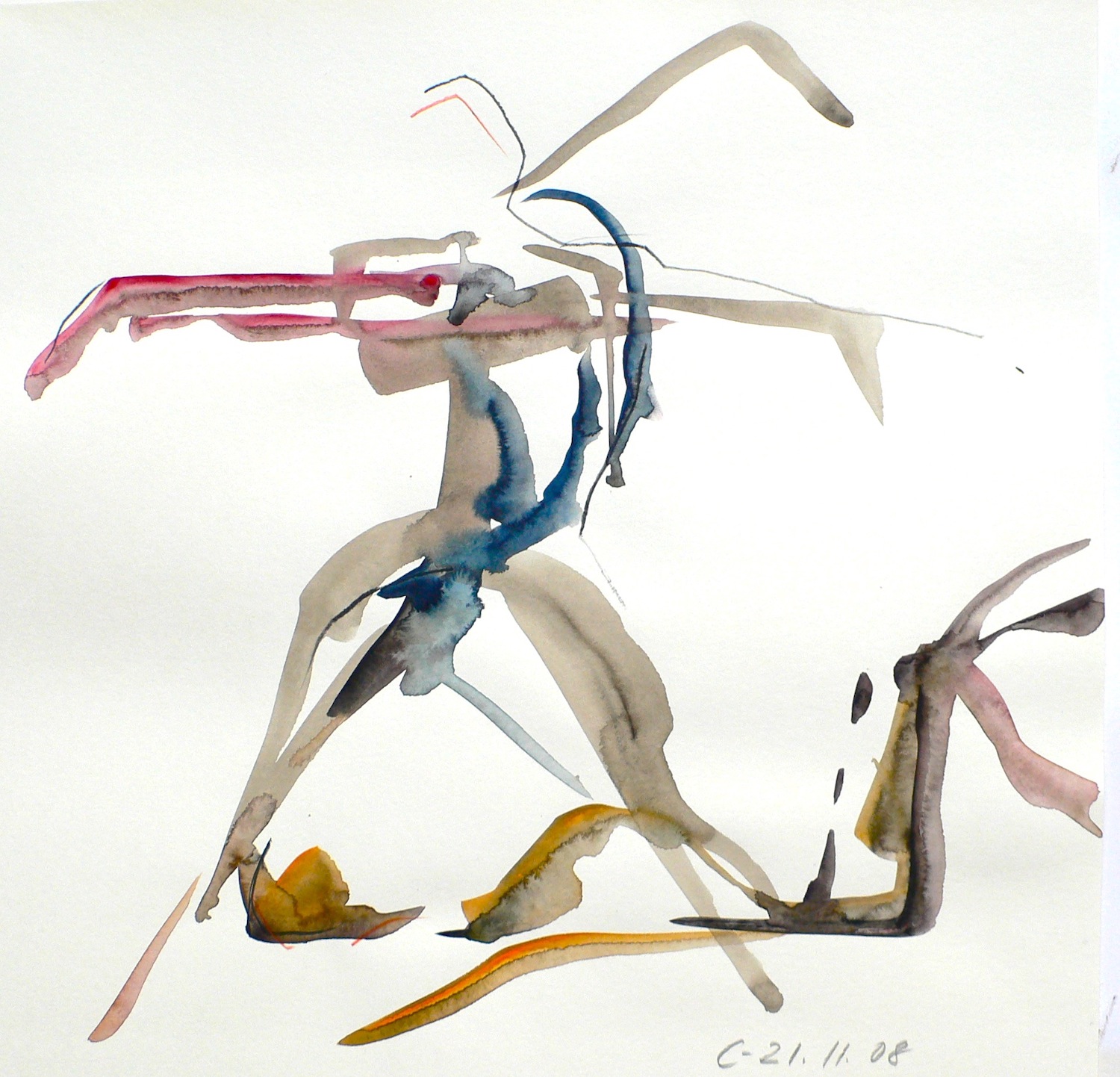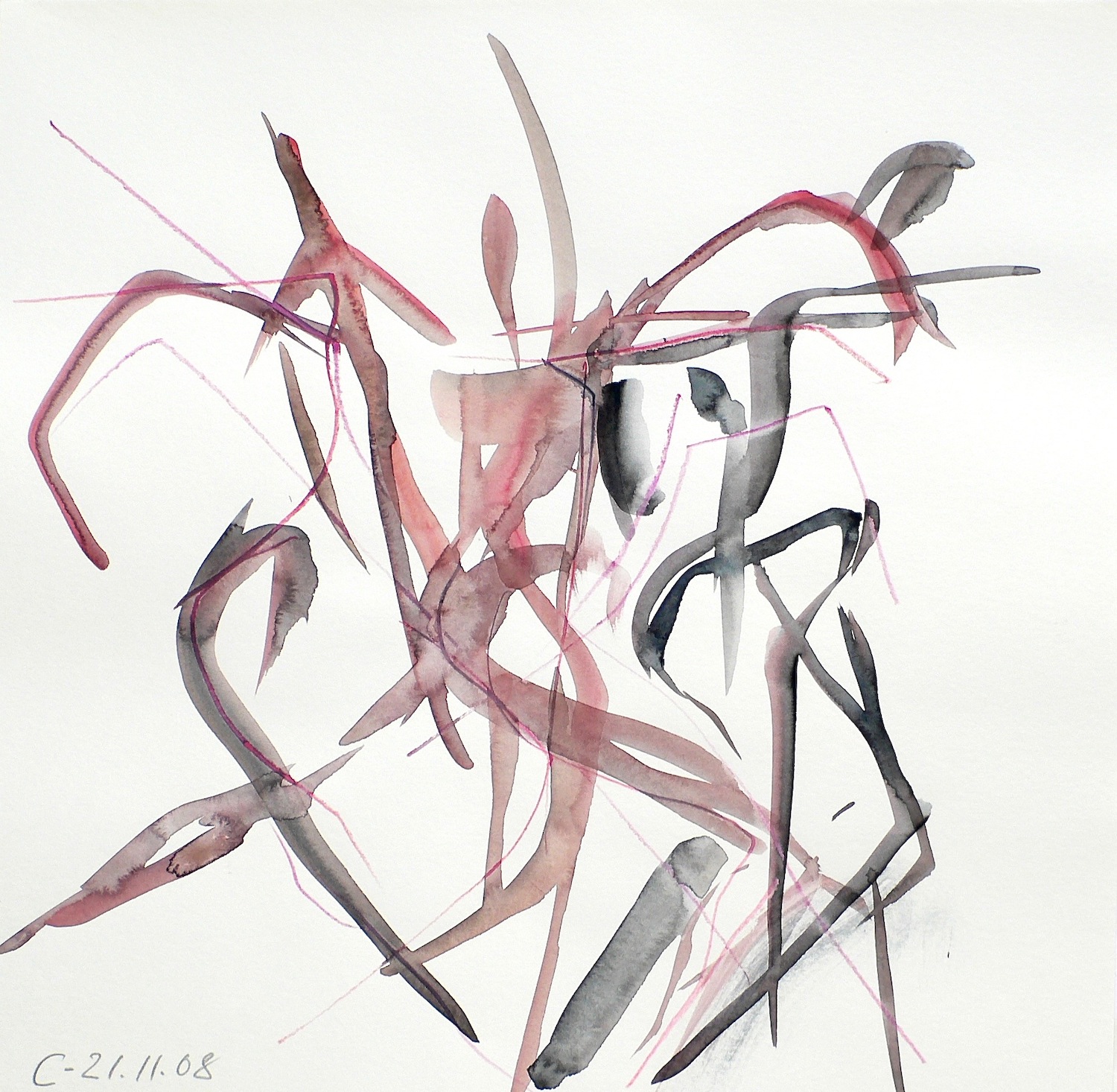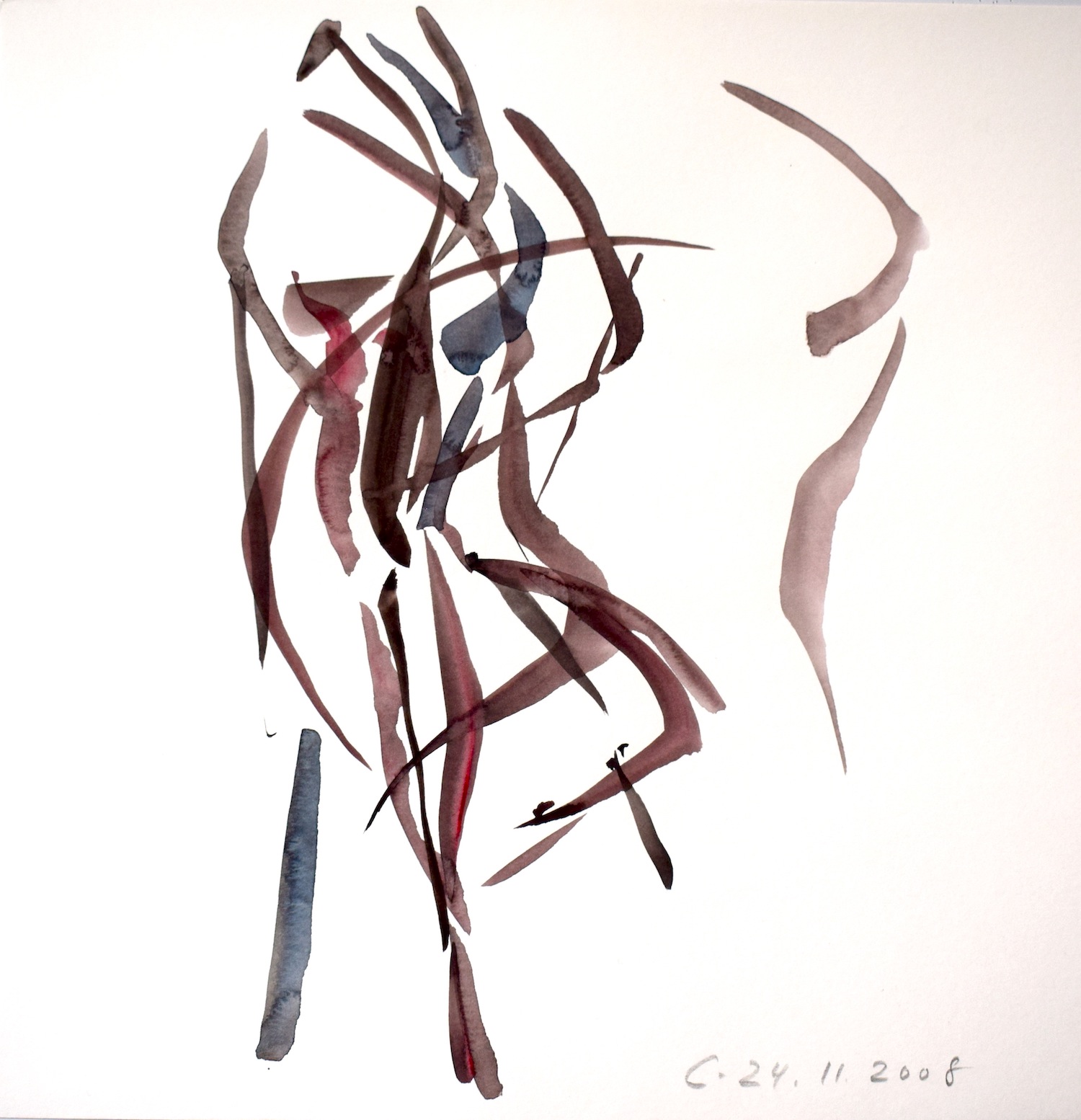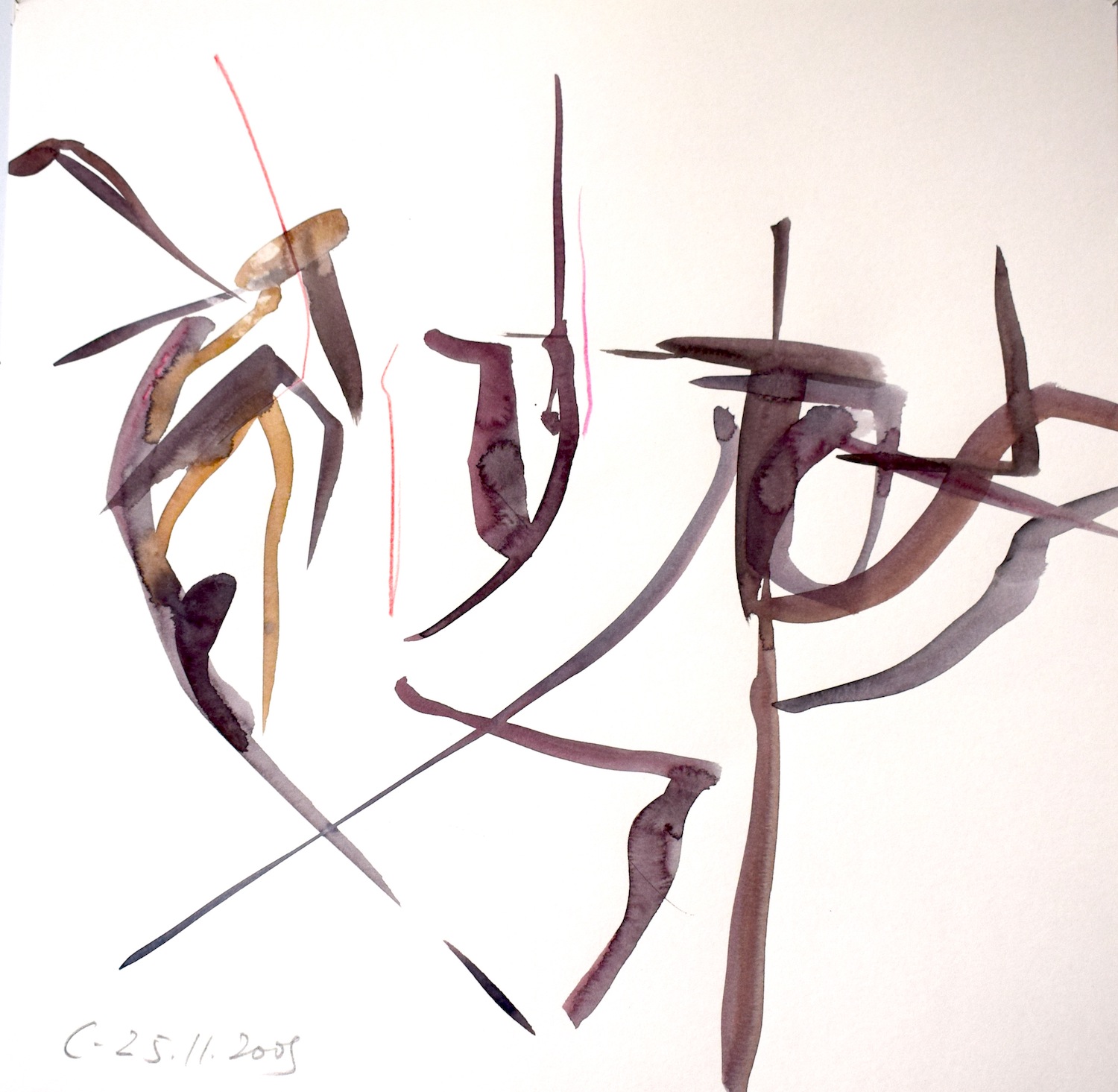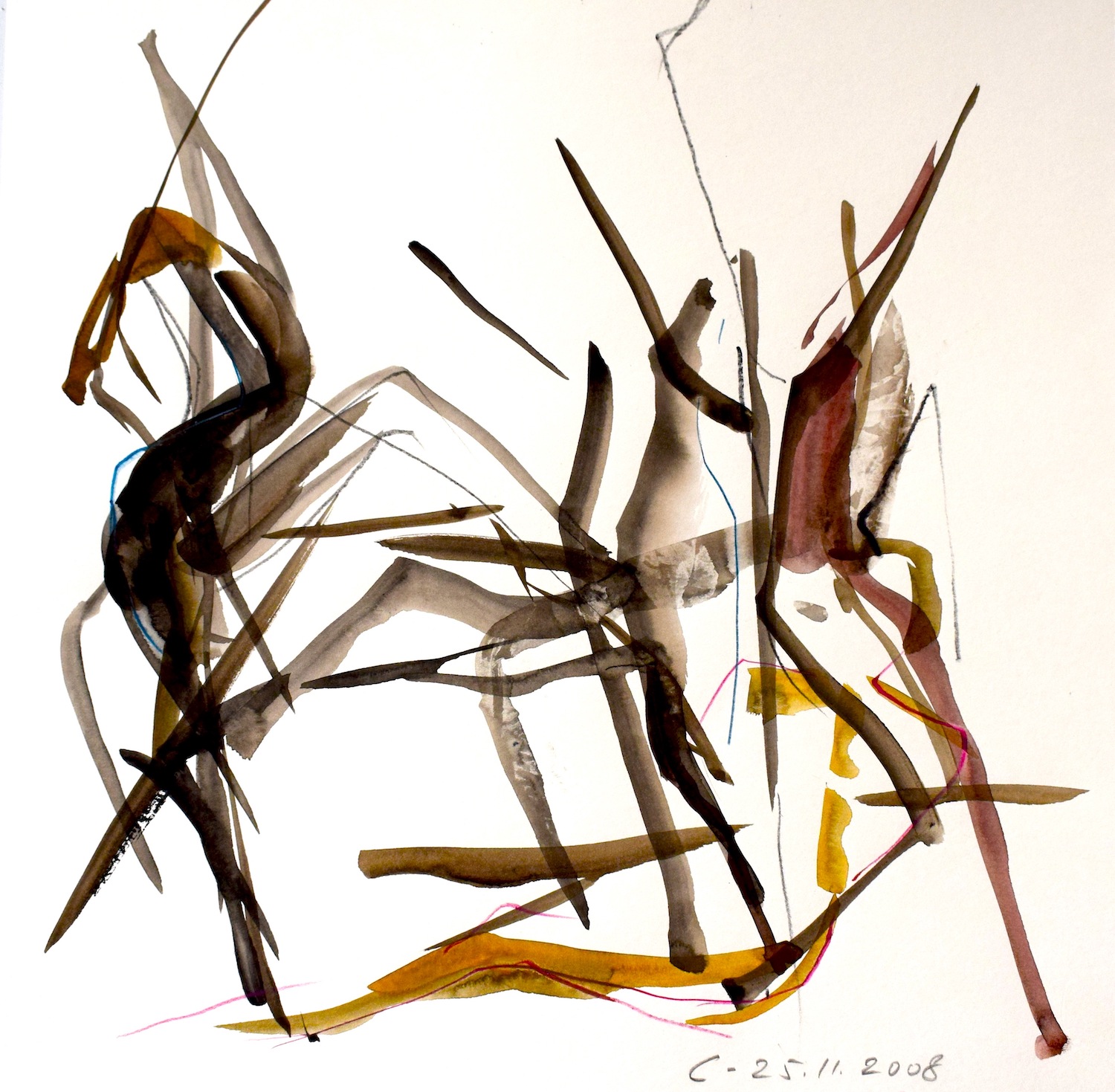Slowmotion
At the same time to the – pieces of sea – my interest in the figure arose. There is a mutual influence, in the dissolution of the motif into movement structures.The object is not grasped by its outline, but from within. The lines and hatchings are drawn freely beyond the shape into the surrounding space, they encompass, concentrate and ultimately limit the body. When viewed from close up, the drawings become movable structures; when viewed from a distance, a real image appears.
The work together with the dancer LOTTE GROHE did not consist of static sessions, but GROHE developed a canon of movement out of inner tension, which I translated immediately. The spontaneously created charcoal drawings on sheets of paper show the phases of movement in life size. The simultaneous layering of the forms creates a structure that refers to the body and its gestures, but does not show it in its pictorial entirety: the line, hatching expresses the rhythm, dynamics and areal expansion of the movement. The drawings show the flow of movement of the dance in an intuitive way. The timing cannot be reconstructed, the performance is summarized in a closed structure: the slow motions.
Répétition
Twenty years after I had first begun to work with dancers on dance, I turned again to the human body and created RÉPÉTITION, a new series of paintings. In 2004 after attending rehearsals for the dance pieces „Sacre du printemps“ and „Orma“ at the Ballet de l‘Opéra, Toulouse. I began translating the elements of modern dance into elements of drawing. In 2006 I used silksceen technique to strike variations on this theme. 2008 saw the creation of series of watercolours to the dance piece „Caravaggio“ by the Staatsballet, Berlin. The effect is abstract: body forms dissolve in mouvements on the paper.

